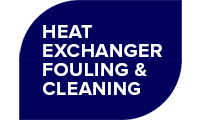Heat Exchanger Fouling and Cleaning X – 2013
09-14 June 2013, Budapest, Hungary
PREFACE
As the requirement for highly effective heat transfer continues to increase steadily due to the rising cost of energy, manufacturers and operators of heat exchangers come under pressure to develop innovative designs and operational modes which will optimize heat recovery while at the same time reduce equipment size and mass. At the same time, they have to deal with fluids which are increasingly difficult to process. One major problem directly related to these trends is the deposition of unwanted materials on the heat transfer surfaces, which occurs in most heat exchangers operating with industrial fluids. This problem is particularly gaining attention for heat exchangers with complex geometries which are now used more commonly in industry. Conservative studies estimated that heat exchanger fouling may lead to additional costs in the order of 0.25% of the GDP of industrialised countries, and that it is responsible for 2.5% of the total equivalent anthropogenic emissions of carbon dioxide. Not surprisingly, this comes with an enormous energy price-tag as well as considerable green-house gas emissions, acidification of water resources and release of chemical fouling inhibitors or cleaning agents.
A bi-yearly series of conferences on heat exchanger fouling and cleaning has been organized since 1995, mostly by the editors of the present e-proceedings. These meetings provide an opportunity for experts from industry, academia and government research centres from around the world to present their latest research findings and technological developments in the areas of fouling mitigation and cleaning technologies. The meetings consist of overview presentations, technical papers, poster sessions, and panel discussions. Following the highly successful meetings in San Luis Obispo, USA (1995), Lucca, Italy (1997), Banff, Canada (1999), Davos, Switzerland (2001), Santa Fé, USA (2003), Kloster Irsee, Germany (2005), Tomar, Portugal (2007), Schladming, Austria (2009), Crete Island, (2011), the 10th conference in this series was held in Budapest, Hungary in June 2013.
The following papers have been presented and recommended for publication in the conference e-proceedings after a careful refereeing and revision process. The proceedings cover many aspects of heat exchanger fouling along with innovative state-of-the-art fouling mitigation and cleaning strategies. The editors wish to thank everybody who contributed towards the conference and the post conference e-conference proceedings, i.e.
- all the authors and participants who invested substantial efforts to produce high-quality papers and to attend the conference;
- the technical referees who helped to improve the quality of these papers even more, by providing valuable and helpful comments; and
- the Conference Advisory Committee and the Session Chairpersons.
Editors
M. Reza Malayeri
University of Stuttgart (Germany)
Hans Müller-Steinhagen
Technische Universität Dresden (Germany)
A. Paul Watkinson
University of British Columbia (Canada)
Our sponsors:




ARTICLES
(PDF documents)
CRUDE OIL AND HYDROCARBON FLUID FOULING
- Analysis of fouling rate and propensity for eight crude oil samples in annular test section
A. Smith - Deposition from a sour heavy oil under incipient coking conditions: Effects of surface material and temperature
W. Wang and A.P. Watkinson - Fouling monitoring in crude oil preheat trains
H. Erdener Akınç, M. Becer, M. Bakır, Y. Özçelik, and F. Balkan - Crude oil fouling field data and a model for pilot-plant scale data
H.M. Joshi - An industrial case study on retrofitting heat exchangers and revamping preheat trains subject to fouling
E.M. Ishiyama, S.J. Pugh, J. Kennedy, D.I. Wilson , A. Ogden-Quin and G. Birch - Investigation of fouling rates in a heat exchanger using an innovative fouling rig
M. Ratel, Y. Kapoor, Z. Anxionnaz-minvielle, L. Seminel, and B. Vinet - A sliding mixed-integer linear programming approach for the optimization of the cleaning schedule of crude preheat trains
J.C. Lemos, B.C.G. Assis, A. L. H. Costa , E.M. Queiroz, F.L.P. Pessoa, F.S. Liporace and S.G. Oliveira - Maintenance scheduling and optimization in diesel hydroprocessing unit- feed/reactor effluent exchangers
S. Orman, G. Şahin, Ş. Baş, Y. Özçelik, and F. Balkan - Application of complex approach for troubleshooting related to waste gas preheater fouling
P. StehlÍk, Z. Jegla and B. Kilkovský - Considering in-tube crude oil boiling in assessing performance of preheat trains subject to fouling
E.M. Ishiyama and S.J. Pugh - Fouling of a heated rod in a stirred tank system
B. Petkovic and A.P. Watkinson - Minimizing crude oil fouling by modifying the surface of heat exchangers with a flexible ceramic coating
O. Santos, J. Anehamre, C. Wictor, A. Tornqvist and M. Nilsson
FOULING IN POWER PLANTS
- The effects of chemical additives on magnetite deposition in boiling heat transfer
C. Gasnier and D.H. Lister - Influence of impurities on corrosion products behavior in feedwater conditions
S. Delaunay, C. Mansour, A. Bescond and J-L. Bretelle - Fouling of steam generator tubes in nuclear power plants: laboratory tests to reproduce oxides deposition
C. Goujon, T. Pauporté, C. Mansour, S. Delaunay, and J.-L. Bretelle - Dissolution rate of sodium salt scales in falling film evaporators
E. Karlsson, A. Broberg, A. Åkesjö, and M. Gourdon
INDUSTRIAL FOULING PROBLEMS
- Fouling of heat transfer surfaces in a steam assisted gravity drainage (SAGD) in situ facility for the recovery of oil sands bitumen
T. Pugsley, D. Pernitsky, J. Grundler, and E. E. Johnsen - An analysis of likely scalants in the treatment of produced water from Nova Scotia
G.P. Thiel, S.M. Zubair and J.H. Lienhard V - Effect of fouling on the thermal performance of condensers and on the water consumption in cooling tower systems
X. Wu, and L. Cremaschi - The effect of start-up on fat (and wax) fouling tests
J.-Y. Huang, Y.M.J. Chew and D.I. Wilson - Investigations of polymer fouling on heated and cooled surfaces
J.C. Kuschnerow, S. Dorn, H. Föste, W. Augustin, and S. Scholl - Field tests on heat exchangers equipped with dual enhanced tubes in a quench water application
J. Provost, J. El-Hajal, and T. Lang - The influence of phosphate on calcium carbonate formation in hard water
S. Noda, T. Saito, K. Miya, S. Furukawa, S.M. Clarke, and D.I. Wilson - When is fouling too fast to measure thermally?
V.Y. Lister, J.F. Davidson and D.I. Wilson
BIOFOULING
- When to clean, how to clean: Biofilms
T.A. Pogiatzis, V.S. Vassiliadis, F.J. Mergulhão and D.I. Wilson - Application of fluid dynamic gauging in the characterisation and removal of biofouling deposits
O.P.W. Peck, M.R. Bird, A. Bolhuis, and Y.M.J. Chew - Antibacterial efficiency of titanium doped DLC coatings
X.J. Su, S. Zhang, Q. Zhao and S. Wang - Biofilm formation under turbulent conditions: External mass transfer versus shear stress
J.M.R. Moreira, J.S. Teodósio, M. Simões, L.F. Melo, and F.J. Mergulhão - Control of bio-fouling in ground and salt water plate heat exchangers using iodinated bubble infusion: Two case studies
M. Radicone - Methacrylate copolymers for anti-biofouling coatings: A chemical approach
D. Pospiech, S. Starke, T. Bünker, F. Müller, R. Frenzel, F. Simon, K. Grundke, U. Oertel, M.Opitz, R. Kruspe and B. Voit - A new approach for mitigating biofouling by promoting online cleaning using a sacrificial paraffin coating
Q. Yang, D.I. Wilson, S. Chang, and L. Shi
PARTICULATE FOULING
- Modeling turbulence and thermophoresis in plate heat exchanger with high solid content
U. Ojaniemi, M. Manninen, T. Pättikangas, and M. Riihimäki - Particulate fouling of polymeric hollow fiber heat exchanger
I. Astrouski, M. Raudenský, and M. Dohnal
FOULING IN AUTOMOTIVE INDUSTRY
- Effects of soot deposition on EGR coolers: dependency on heat exchanger technology and engine conditions
Y. Bravo, C. Larrosa, C. Arnal, M. Alfè, and R. Bilbao - CFD transient simulation of the fouling of an EGR cooler in a diesel exhaust environment
M.C. Paz, E. Suárez E., M. Concheiro, and J. Porteiro - CFD study of turbulence induced structures in EGR coolers
K. Mohammadi and M.R. Malayeri - Prediction of fouling in EGR coolers with radial basis function neural networks
A. Mirsadraee and M.R. Malayeri
FOULING DURING FOOD PROCESSING
- Critical flow angle for mitigating deposition of skim milk powder on tubes in cross-flow
T.G. Walmsley, M.R.W. Walmsley, M.J. Atkins, J.R. Neale and D.M. Addenbrooke - Fouling of evaporators in maize processing: Developing a fundamental understanding
K.D. Rausch, R.K. Challa, Y.A. Zhang, D.B. Johnston, B.S. Dien, V. Singh, and M.E.Tumbleson - Influence of soluble proteins on the adherence of particulate soils
Y. Touré, P.G. Rouxhet and M. Sindic
EFFECT OF SURFACE PROPERTIES
- Kinetics and quantity of crystallisation fouling on polymer surfaces: impact of surface characteristics and process conditions
C. Dreiser, L.J. Krätz and H.-J. Bart - Polymer film heat exchanger for seawater desalination: prevention and cleaning of fouling deposits
C. Dreiser, L.J. Krätz and H.-J. Bart - Nanostructured coatings for resistance to aquatic biofouling
P. Navabpour, X. Zhang, and K. Cooke - Organo silicon and titanium oxide coatings for mitigation of CaCO3 depositions
E. Puhakka and E. Lecoq - Use of perfluoropolyether coatings to mitigate fouling on heat exchanger metal surfaces
V. Oldani, C.L. Bianchi, S. Biella, C. Pirola, and G. Cattaneo
CLEANING OF HEAT EXCHANGERS
- EMbaffle® heat exchanger in fouling operation
E.J.J. van der Zijden, V.M. Brignone, M. Rottoli and C.F.J.M. van Lint - Application of stabilized hydrogen peroxide for the removal of iron polysulfide deposits
T. McCartney and R. Shank - A criterion for the selection of projectiles for cleaning tubular heat exchangers
M.R. Jalalirad and M.R. Malayeri - Optimum injection period of spherical projectiles in tubular heat exchangers
M.S. Abd-Elhady, M.R. Jalalirad, and M.R. Malayeri - The effective removal of FeCO3 deposits from critical process heat exchangers used in ammonia production using a proprietary ultrasonic chemical cleaning method
R. Philion and T.R. McCartney - From practice-to-theory-to-practice: Advances in the cleaning of heat exchangers using ultrasound
B. Kieser, A. Goode and R. Philion
FOULING OF COMPACT AND MICRO HEAT EXCHANGERS
- Fouling in a micro heat exchanger during continuous crystallization of solid lipid nanoparticles
M. Schoenitz, J.H. Finke, S. Melzig, A. Hohlen, N. Warmeling, C. Müller-Goymann, W.Augustin, and S. Scholl - Mitigation of crystallization fouling in microstructured heat exchangers with ultrasound
J. Bucko and W. Benzinger - An experimental comparison of brazed type plate heat exchangers based on lifetime requirements of Combi boiler industry
G. Çetin, M. Pekgüzelsu and H.M. Altay
FOULING MITIGATION
- Increased shear, reduced wall temperatures, use of hiTRAN Wire Matrix Inserts in systems subject to fouling
P. Drögemüller, W. Osley and D. Philipp - Crystallization fouling with enhanced heat transfer surfaces
B. Crittenden, M.Y. Yang, L. Dong, R. Hanson, J. Jones, K. Kundu, J. Harris, O. Klochok, O. Arsenyeva and P. Kapustenko - Scale formation and mitigation of mixed salts in horizontal tube falling film evaporators for seawater desalination
H. Glade, K. Krömer, S. Will, K. Loisel, S. Nied, J. Detering and A. Kempter - Pulsed flow and surface coatings to mitigate fouling
H. Föste, F. Stehmann, W. Augustin, and S. Scholl - Fouling and its mitigation in PC boiler co-firing forestry and agricultural biomass
S. Kalisz, Sz. Ciukaj, M. Tymoszuk and H. Kubiczek - Influence of the film flow characteristic on the cleaning behaviour
E. Fuchs, A. Boyé, H. Stoye, M. Mauermann, and J.-P. Majschak - Optimization approach for efficient cleaning with impinging jets – influence of nozzle diameter, pressure and nozzle distance
H. Köhler, H. Stoye, M. Mauermann, and J. -P. Majschak
HEAT EXCHANGER FOULING MONITORING
- Comparison of fouling detection methods using experimental data
O. Gudmundsson, S. Lalot and J.E. Thorsen - Pressure Mode fluid dynamic gauging under extreme conditions
A. Ali, Y.M.J. Chew, P. Gordon, B. Salley, W.R. Paterson and D.I. Wilson - Ultrasonic adhesion measurement of whey protein fouling
N. Collier, D. Callens, P. Campistron, B. Nongaillard, M. Jimenez, G. Alogaili, P. Debreyne,G. Ronse , and G. Delaplace - Fouling monitoring in thermosiphon reboiler
T. Kuwahara, C. Wibowo, A. Kuboyama, M. Nakamura and Y. Yamane - A novel fouling and cleaning set-up for studying the removal of milk deposits produced during UHT-treatment
C. Hagsten , N. Loren, L. Hamberg, J. Wiklund, F. Innings, L Nilsson, M. Paulsson, C.Trägårdh and T. Nylander - Following the interactions on the inner surface – A step towards fouling monitoring
A. Pereira, B. Pereira, J. Martins and M. Freire
